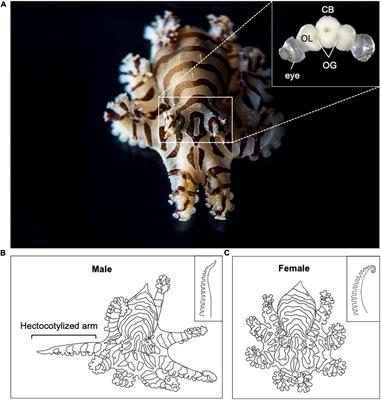My med-large bimac I purchased (WC) in November, was the most interactive ’pus I have yet to care for, “Bob” (now “Roberta”) suddenly became a “pet rock”, and hid in one small cave since mid-January, accepting only the rare Pithos crab as food. I knew what this meant, and now see this AM multiple little white baby ‘puses (and one slightly larger). Roberta is still hanging in there, but I know her days are numbered. My dilemma is: what is the best/most available food I can give these 5-7 mm babies, how soon do I have to separate them, and if anybody wants one (and they survive) let me know. In WI, so no real “release” possibilities, here. Anyone with experience? Obviously, I want to maximize their survival chances.
Also, just how long can I expect Roberta to last, now that at least some eggs have hatched, and has anyone EVER seen a bimac live beyond their [first?, I dunno!) brood? She was always taking food by hand from me, wanting to “taste” me, and generally acting like one of the “Soul of an Octopus” GPO guys. Thanks for your help, btw.

Also, just how long can I expect Roberta to last, now that at least some eggs have hatched, and has anyone EVER seen a bimac live beyond their [first?, I dunno!) brood? She was always taking food by hand from me, wanting to “taste” me, and generally acting like one of the “Soul of an Octopus” GPO guys. Thanks for your help, btw.

